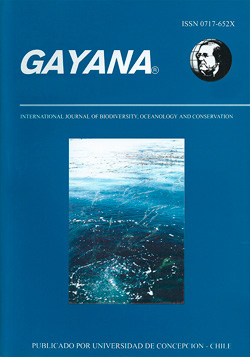Prey selection by free-ranging dogs in the Estero Culebrón wetland (Coquimbo, Chile)
Keywords:
free ranging dogs, resource selection, urban wetlands, bird conservationAbstract
We examine the factors that influence the selection of prey by stray dogs in the Estero Culebrón wetland (Coquimbo, Chile) and characterize their attacks during 20 visits in 2015. We use generalized lineal models considering the size of the bird, its relative abundance, site and type of substrate as explanatory variables. We recorded a pack of seven individuals who carried out 34 attacks on birds, of which the pelican had the highest predation frequency. The size of the bird and the site were positively related to the attacks. The selection of the pelican as prey could be related to its low flight initiation distance and large size, which facilitates the attack by dogs and, in addition, this greater size could sustain energetically to pack of dogs, especially when they are numerous. Other conditions such the absence of cattail (Typha angustipholia) and low water depth at the beach sector, would facilitate the development of attacks by reducing obstacles to persecution. Finally, due to the danger that these animals represent for the people and the fauna of wetlands, it is urgent to develop management plans that consider the retirement and transfer of them to rescue centers, as well as to implement sterilization and education campaigns.




